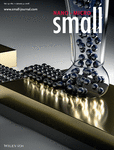Journal list menu
Export Citations
Download PDFs
Cover Picture
Nanochemical Printing: Micrometer to 15 nm Printing of Metallic Inks with Fountain Pen Nanolithography (Small 1/2018)
- First Published: 04 January 2018
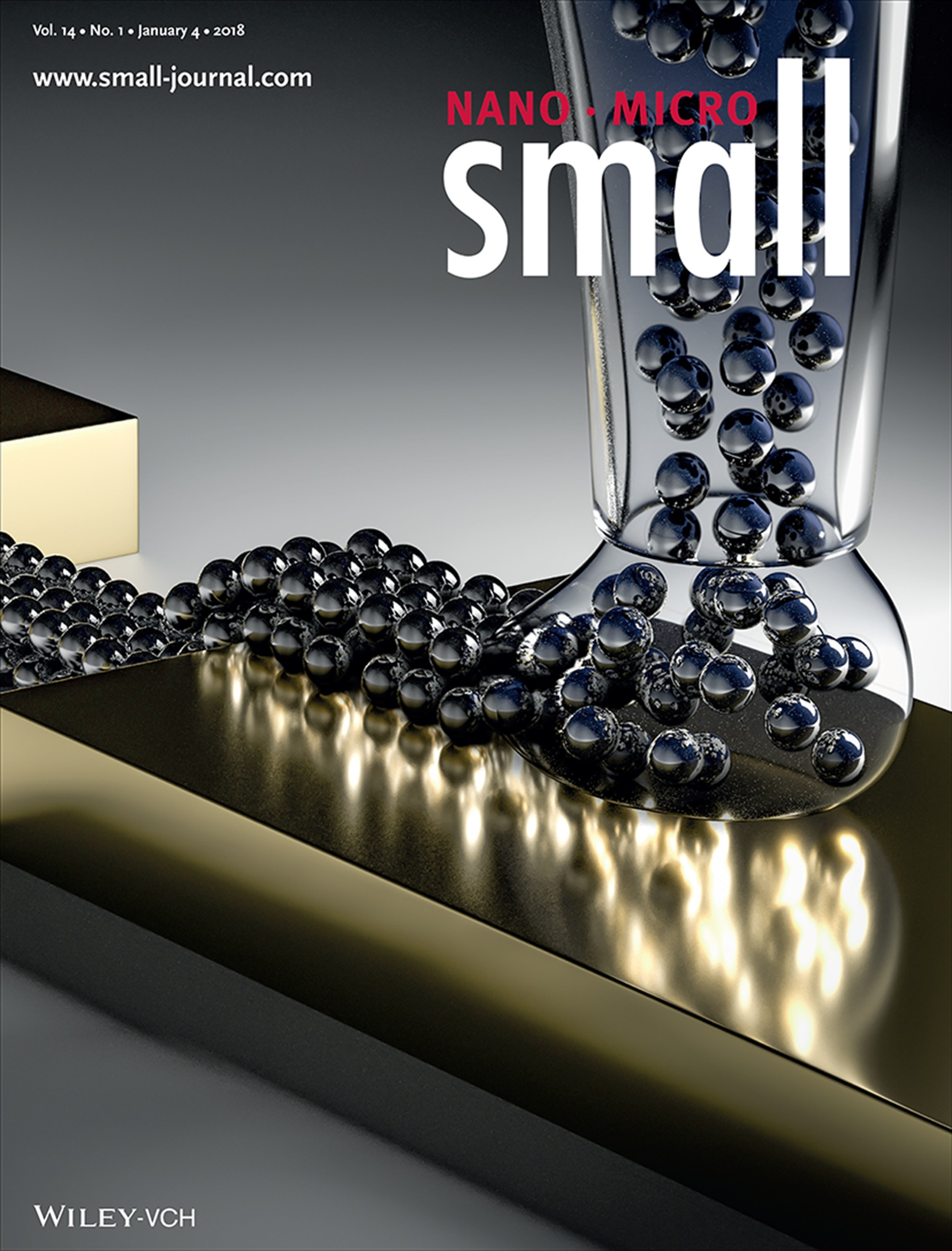
In article 1702324, Aaron Lewis and co-workers report a method of fountain pen nanolithography (FPN) employing an atomic force sensing cantilevered nanopipette. The nanopen has an internal reservoir and geometric structure allowing for upright microscope viewing at the highest magnification. FPN allows for controlled printing of various inks.
Inside Front Cover
Flexible Displays: Wavy Architecture Thin-Film Transistor for Ultrahigh Resolution Flexible Displays (Small 1/2018)
- First Published: 04 January 2018
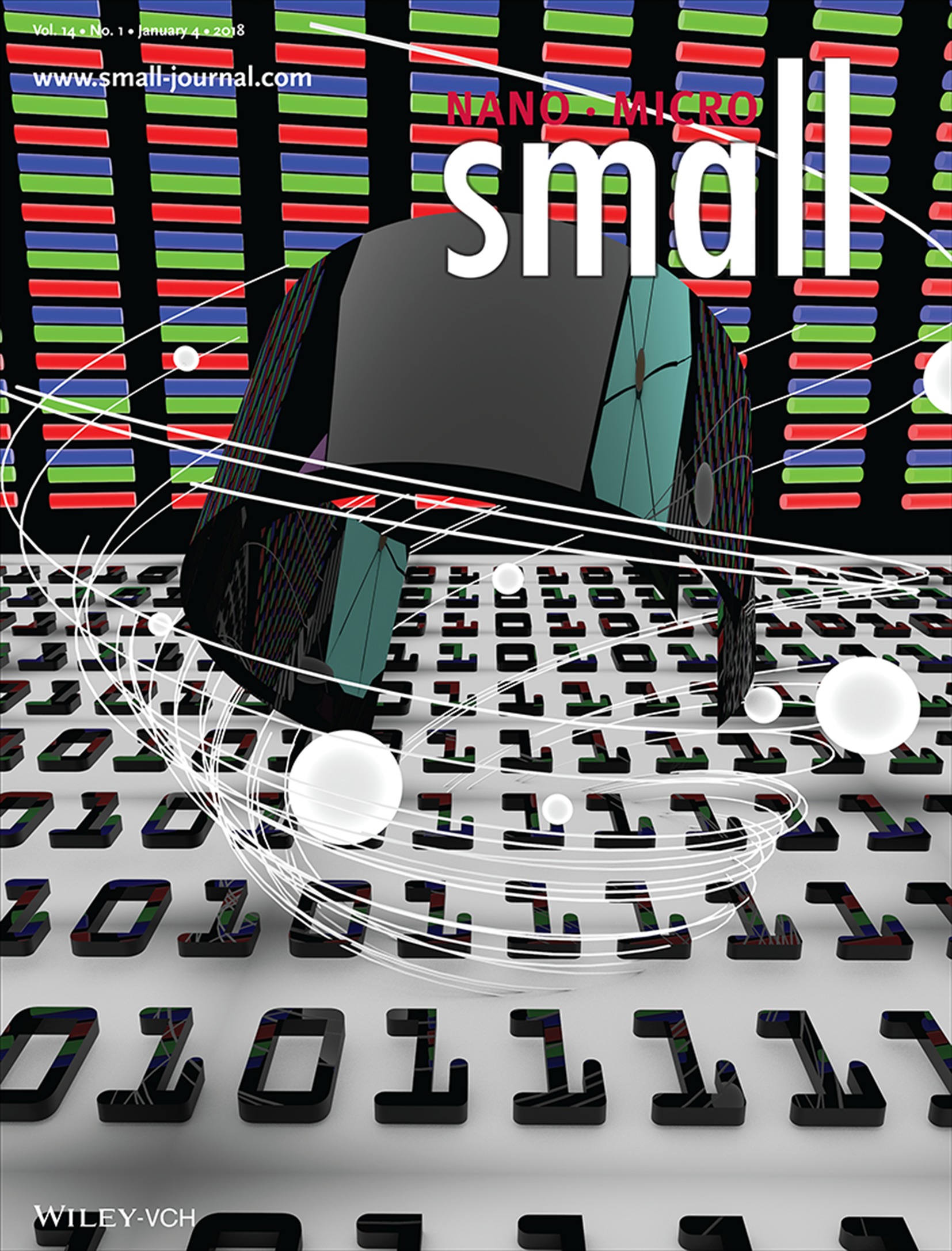
In article 1703200, Muhammad Mustafa Hussain and co-workers report a wavy architecture of non-planar fin arrays which are laterally connected to each other for flexible display applications. The novel architecture results in enhanced transistor performance (×2) due to 70% more width without any area penalty (because they are vertically oriented), and a flexible display with higher brightness, and faster frame change in an energy efficient manner. Design by Arwa Kutbee.
Back Cover
Nanosurfactants: Asymmetric Fullerene Nanosurfactant: Interface Engineering for Automatic Molecular Alignments (Small 1/2018)
- First Published: 04 January 2018

In article 1702439, by Kwang-Un Jeong and co-workers, monolayered protrusions constructed by the self-assembly of asymmetric fullerene nanosurfactant in anisotropic liquid crystal media, amplified and transferred the molecular orientation order from surface to bulk, and finally created automatic vertical molecular alignment on the macroscopic length scale.
Masthead
Editorial
Reviews
Perovskite Quantum Dots and Their Application in Light-Emitting Diodes
- First Published: 30 November 2017

Perovskite quantum dots (PQDs) have attracted much attention in recent years due to their unique optical properties, such as tunable wavelength, narrow emission, and high photoluminescence. They show amazing optical properties in two types of light-emitting diode (LED) such as PQDs based white-light LEDs and PQD-QLED. It is hoped that the PQDs based LED can be used in next generation display and lighting applications.
Toward Wearable Self-Charging Power Systems: The Integration of Energy-Harvesting and Storage Devices
- First Published: 30 November 2017
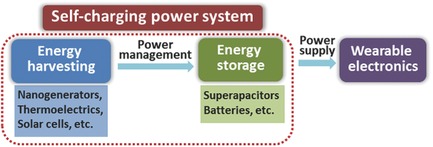
Self-charging power systems (SCPSs) integrate energy-harvesting and energy-storage devices so that environmental energy can be in situ scavenged and stored for sustainable power supply of wearable electronics. Recent progress in wearable SCPSs integrated with piezoelectric nanogenerators, triboelectric nanogenerators, solar cells, thermoelectric nanogenerators, and hybrid energy-harvesting devices is summarized.
Communications
Wavy Architecture Thin-Film Transistor for Ultrahigh Resolution Flexible Displays
- First Published: 13 November 2017
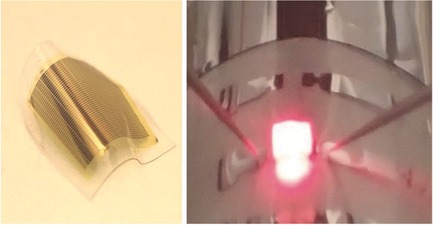
A novel wavy-shaped nonplanar vertically oriented thin-film-transistor (TFT) architecture, that achieves 70% higher drive current per unit chip area compared with planar conventional TFT architectures, is reported for flexible display application. The transistor, due to its atypical architecture, does not alter the turn-on voltage or the OFF current values, leading to higher performance without compromising static power consumption.
Biotinylated Photopolymers for 3D-Printed Unibody Lab-on-a-Chip Optical Platforms
- First Published: 15 November 2017
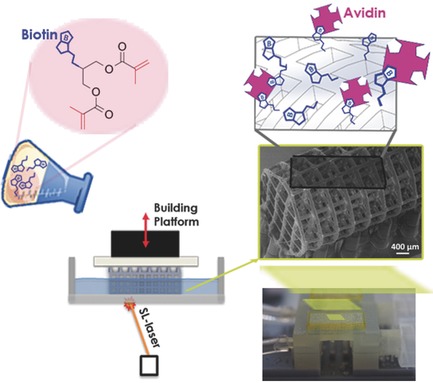
A novel biotin-conjugated photopolymer is synthesized to fabricate bioactive micrometric scaffolds directly embedded within monolithic unibody lab-on-a-chip devices by means of multimaterial stereolithography. This is further exploited to fabricate a real-time noninvasive optical detector for the quantification of the concentration of target biomolecules interacting within the biotinylated 3D microstructures.
Flexible, Stretchable, and Transparent Planar Microsupercapacitors Based on 3D Porous Laser-Induced Graphene
- First Published: 17 November 2017
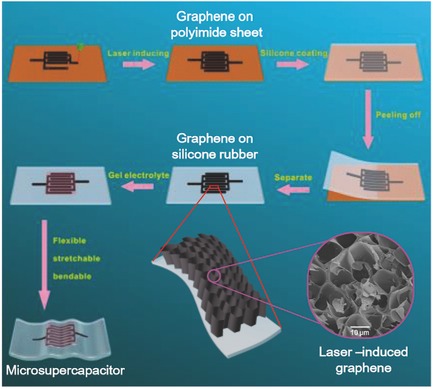
A 3D network of porous graphene is directly produced by a one-step and inexpensive process of direct laser induction on a polyimide sheet. By transferring the laser-induced graphene, the obtained in-plane microsupercapacitors are extremely stretchable and flexible with a high elasticity of up to 400% of the original length and a good long-term stretching stability.
Controllable Synthesis of Organic Microcrystals with Tunable Emission Color and Morphology Based on Molecular Packing Mode
- First Published: 17 November 2017

Perylene organic microcrystals with tunable emission color and morphology are achieved by simply controlling the concentration of the perylene solution and the evaporation rate. Specifically, α phase, β phase, α-doped β phase, and β-doped α phase organic microcrystals are obtained, whose different optical properties are attributed to significantly different molecular packing modes.
Growth of Black Phosphorus Nanobelts and Microbelts
- First Published: 24 November 2017
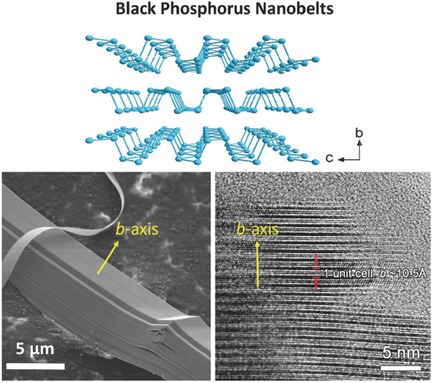
Black phosphorus micro- and nanobelts are fabricated with a novel method under ambient pressure from red phosphorus. The black phosphorus reveals a typical layered structure stacked along the b-axis with thickness ranges from micrometers to tens of nanometers, and can be directly measured in scanning tunneling microscopy in ambient conditions, owing to doping of bismuth.
Frontispiece
Mesoporous Thin Films: Molten Salt Assisted Self-Assembly: Synthesis of Mesoporous LiCoO2 and LiMn2O4 Thin Films and Investigation of Electrocatalytic Water Oxidation Performance of Lithium Cobaltate (Small 1/2018)
- First Published: 04 January 2018
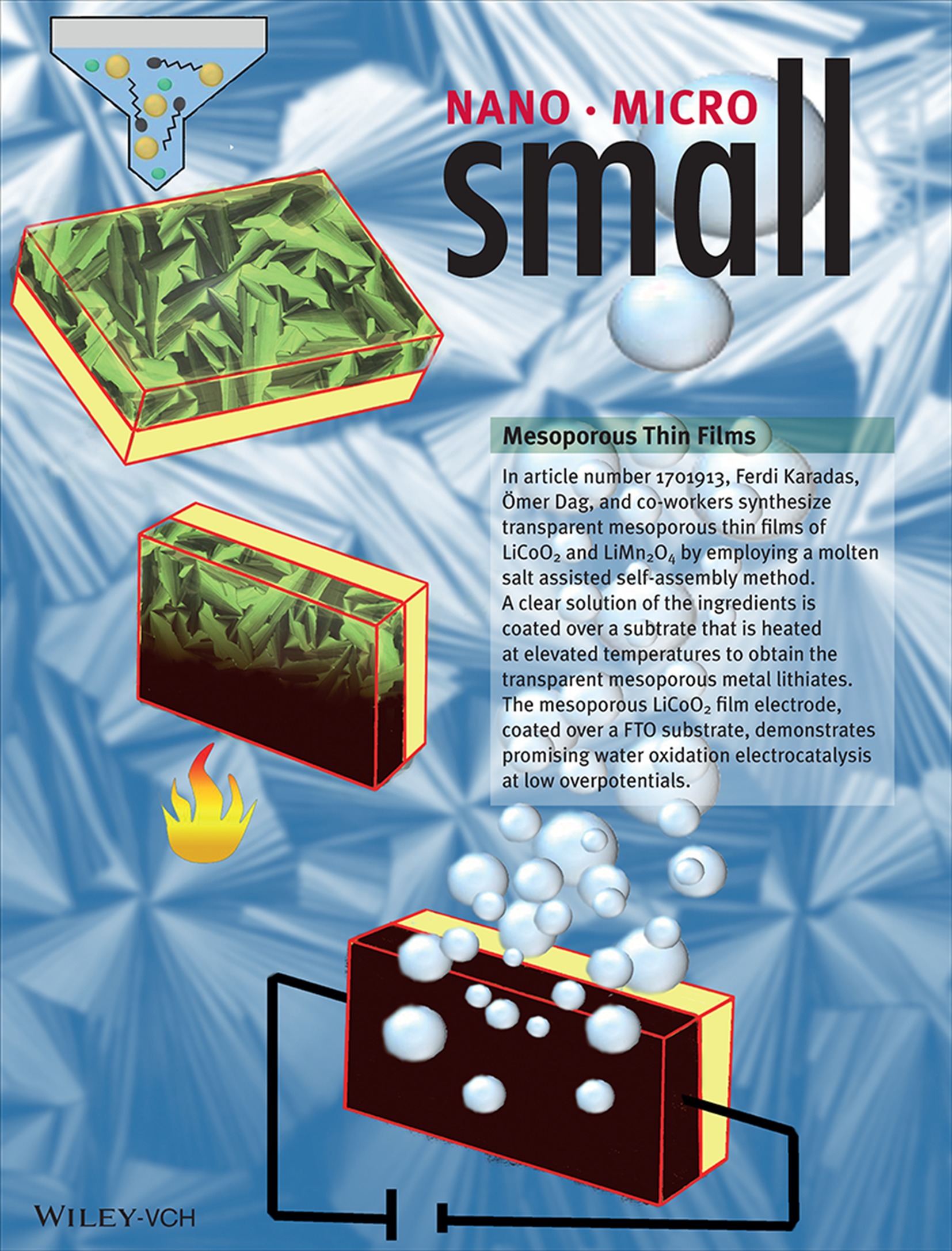
In article number 1701913, Ferdi Karadas, Ömer Dag, and co-workers synthesize transparent mesoporous thin films of LiCoO2 and LiMn2O4 by employing a molten salt assisted self-assembly method. A clear solution of the ingredients is coated over a subtrate that is heated at elevated temperatures to obtain the transparent mesoporous metal lithiates. The mesoporous LiCoO2 film electrode, coated over a FTO substrate, demonstrates promising water oxidation electrocatalysis at low overpotentials.
Full Papers
Molten Salt Assisted Self-Assembly: Synthesis of Mesoporous LiCoO2 and LiMn2O4 Thin Films and Investigation of Electrocatalytic Water Oxidation Performance of Lithium Cobaltate
- First Published: 17 November 2017
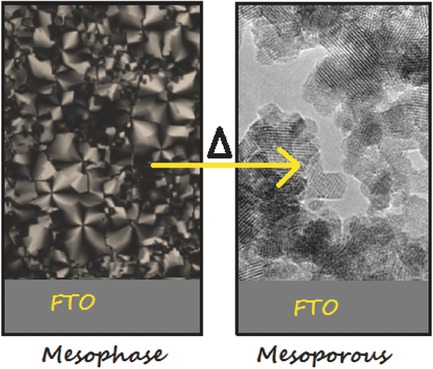
Mesoporous thin films of metal lithiates (LiCoO2 and LiMn2O4) can be prepared in one pot using a molten salt-assisted self-assembly approach. The salt species acts as a solvent in the assembly process and the metal ion precursors. Mesoporous LiCoO2 thin films display promising performance as a water oxidation electrocatalyst with a low overpotential.
Micrometer to 15 nm Printing of Metallic Inks with Fountain Pen Nanolithography
- First Published: 14 November 2017
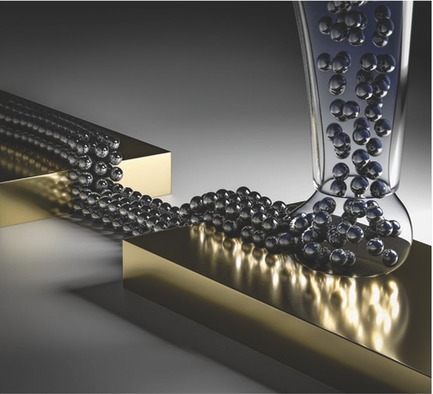
Metallic inks are printed under ambient conditions with dimensions from micrometers to nanometers using fountain pen nanolithography (FPN). FPN is based on force sensing cantilevered nanopipettes with atomic force microscope feedback. Excellent control is achieved of the parameters affected by tip sample interactions and nanopipette orifice diameters. The printing can also be altered by the wetting properties of the inks and surfaces.
Asymmetric Fullerene Nanosurfactant: Interface Engineering for Automatic Molecular Alignments
- First Published: 14 November 2017
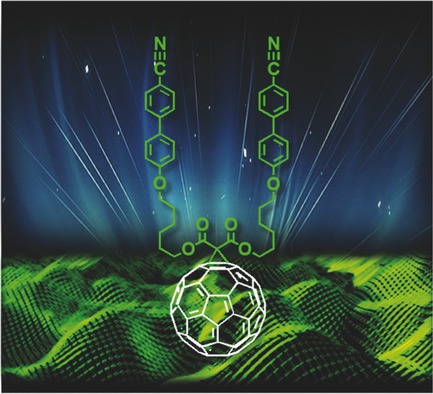
Monolayered protrusions constructed by the self-assembly of asymmetric fullerene nanosurfactant in the anisotropic liquid crystal media amplify and transfer the molecular orientational order from surface to bulk, and finally create the automatic vertical molecular alignment on the macroscopic length scale.
Rhombic-Shaped Nanostructures and Mechanical Properties of 2D DNA Origami Constructed with Different Crossover/Nick Designs
- First Published: 13 November 2017
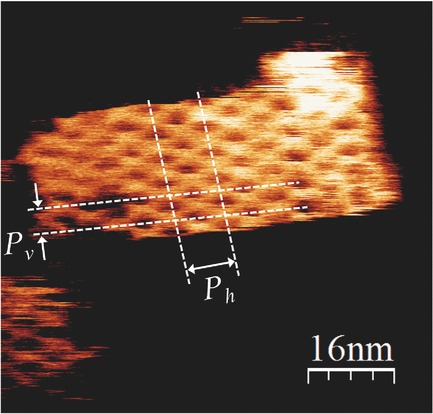
Direct visualization of 2D DNA origami structures constructed with different crossover/nick designs is performed in aqueous solution using frequency-modulation atomic force microscopy (FM-AFM), showing rhombic-shaped nanostructures owing to the crossover rotations as a result of interhelical electrostatic repulsion. The structural robustness of fabricated DNA origami structures and the effect of crossover/nick are comparatively investigated by damaging them using force-controlled AFM.
Emission Tuning with Size-Controllable Polymer Dots from a Single Conjugated Polymer
- First Published: 13 November 2017
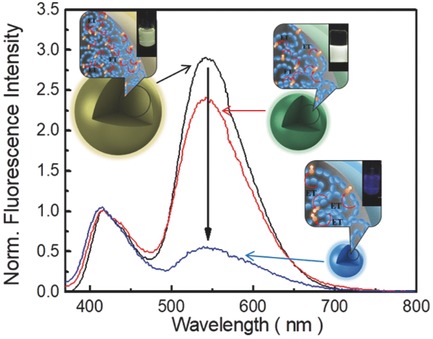
Conjugated polymer dots (Pdots) with a size-dependent emission are demonstrated using a single conjugated polymer (CP). The CPs have a specific fluorescence property with different fluorescence colors in solution and in the solid state. This strategy is a feasible approach to achieving a size-tunable effect for different sized Pdots from a single CP.
Highly Transparent and Integrable Surface Texture Change Device for Localized Tactile Feedback
- First Published: 15 November 2017
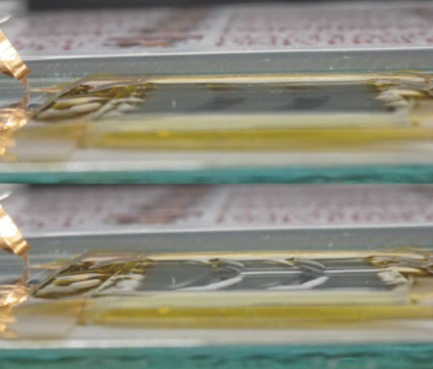
Transparent and integrable surface texture change devices for tactile and haptic feedback based on thickness mode actuation of dielectric elastomer actuators are demonstrated for enhanced human–machine interaction in displays and touchscreens. Development of such a device provides new architecture for elastomeric actuators and advances next generation haptic devices.
Self-Organization of Amorphous Carbon Nanocapsules into Diamond Nanocrystals Driven by Self-Nanoscopic Excessive Pressure under Moderate Electron Irradiation without External Heating
- First Published: 13 November 2017
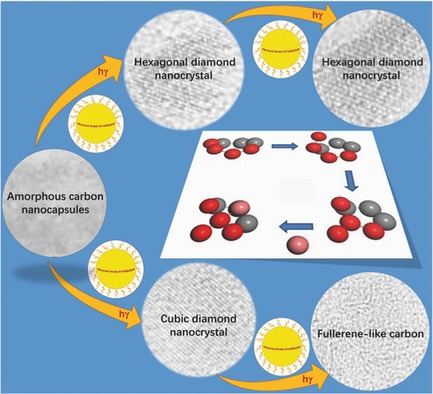
A promising route is developed to realize phase transformation between carbon allotropes at a lower temperature by using a novel pure carbon nanocapsule as a precursor. Self-organization of the highly strained carbon clusters into diamond nanocrystals is done under moderate electron irradiation without external heating. Molecular dynamics simulations demonstrate that the defective rings as the active sites dominate the carbon phase transition.
Scalable Fabrication of Highly Active and Durable Membrane Electrodes toward Water Oxidation
- First Published: 17 November 2017
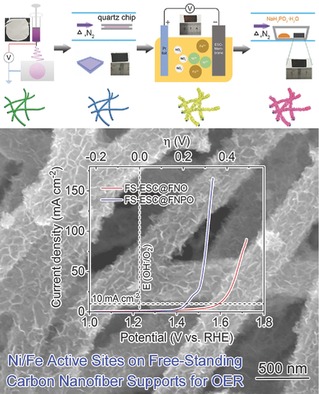
Freestanding graphitized carbon nanofiber membranes are developed as supports for integration with abundant Fe/Ni active sites for the electrocatalytic oxygen evolution reaction (OER). The 3D hybrid structures achieve excellent OER performance when working as freestanding electrodes in alkaline medium, with an overpotential down to 215 mV at a geometrical current density of 10 mA cm−2.
Dual Roles of Protein as a Template and a Sulfur Provider: A General Approach to Metal Sulfides for Efficient Photothermal Therapy of Cancer
- First Published: 17 November 2017
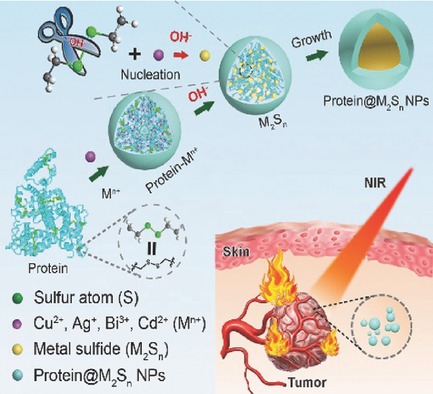
Metal sulfide nanoparticles (NPs) with ultrasmall size, and good biocompatibility are facilely obtained via alkali-driven transformation of S-rich protein–metal complexes. Proteins work as both a sulfur resource and a template, where disulfide bonds are activated to react with metal ions and form metal sulfide NPs in situ, which are proved to be an excellent theranostic platform for cancer therapy.




